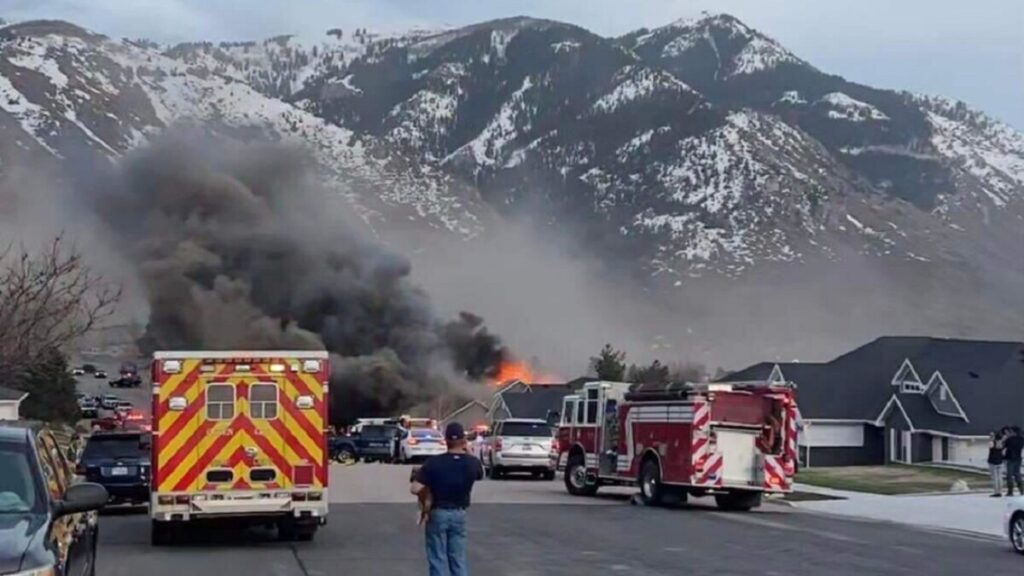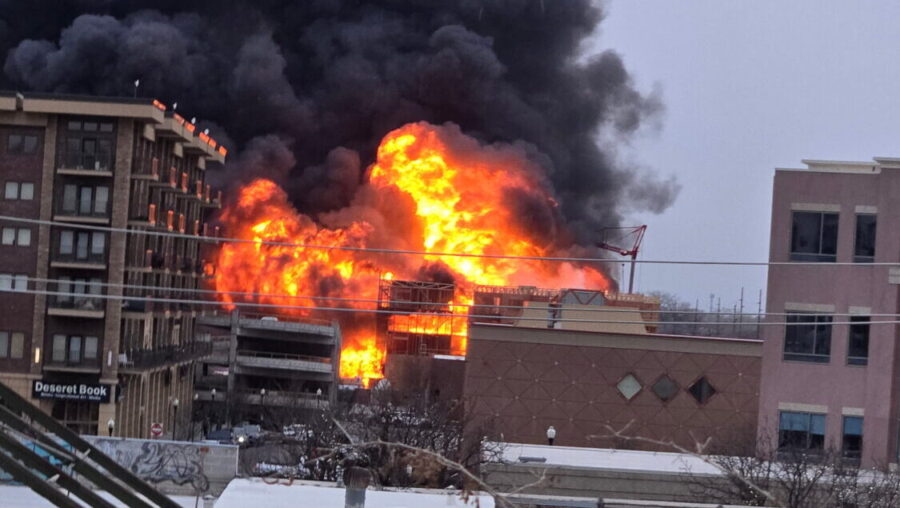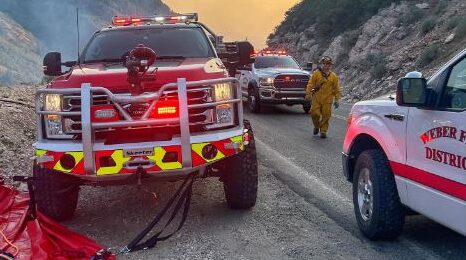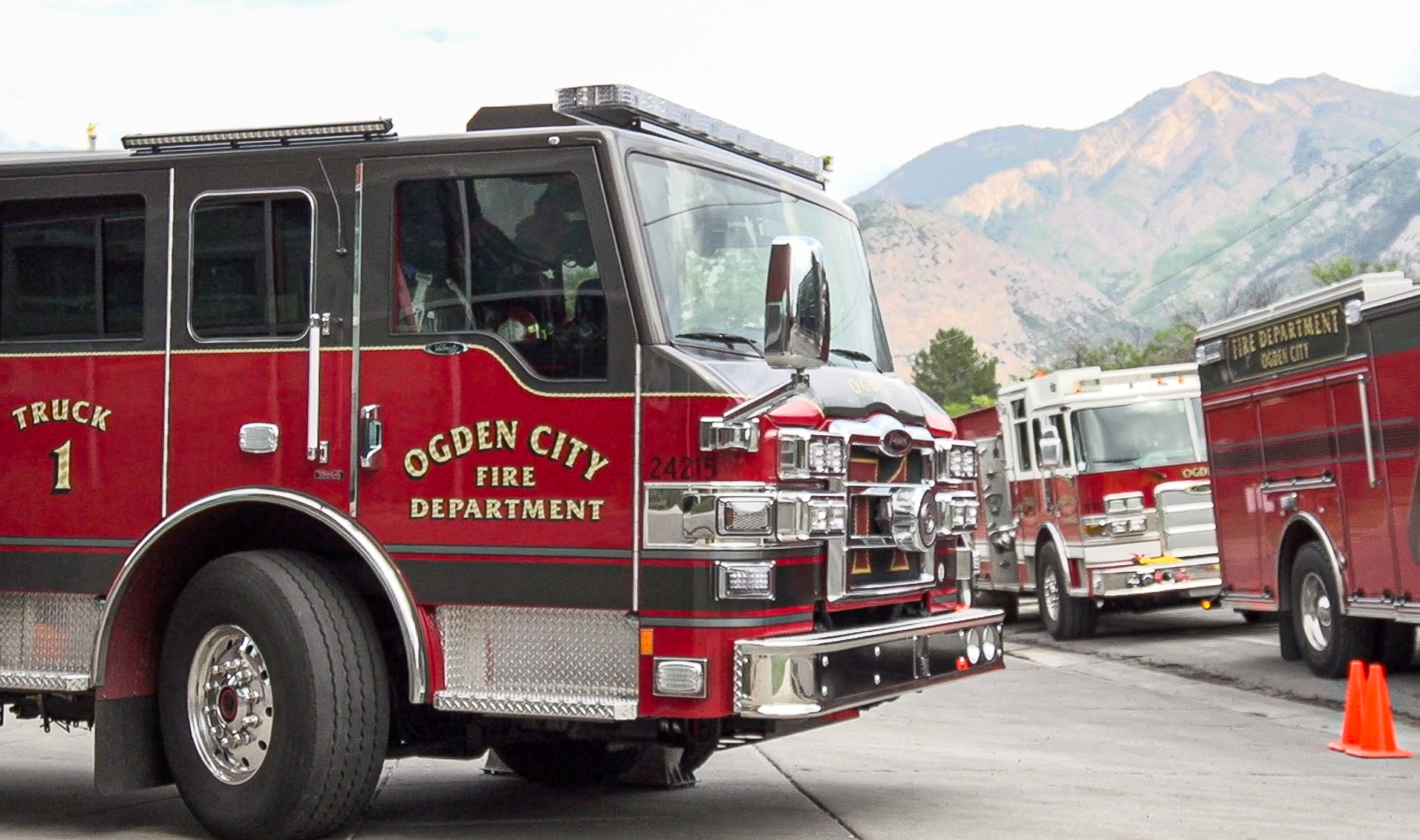“Thick smoke blanketed the skyline, and the quiet town of North Ogden braced itself for a night that would change everything.”
On Wednesday, August 13, 2025, at approximately 3:00 p.m., a vehicle caught fire in the Willard Hills of North Ogden—igniting what would quickly become the Willard Peak Fire, formerly known as the North Ogden Fire. In a shocking matter of minutes, what began as a spark on the mountainside surged across fiery fuels and gamble oak, transforming a quiet afternoon into an urgent emergency for the community.

The incident marked a significant moment in the history of North Ogden Burning, as the community rallied together to face the unprecedented challenge.
Flames raced uphill, threatening homes perched below and prompting mandatory evacuation orders for those living east of 1050 East and north of 3300 North. Winds worked against firefighters, grounding aircraft and intensifying the blaze’s unpredictable advance.
As smoke blanketed neighborhoods, officials and residents alike were forced to grapple with the immediate danger and looming uncertainty.
In those tense early hours, the familiar streets of North Ogden transformed. Front doors left open. Hoses connected to hydrants. Neighbors helping neighbors load pets and belongings. There was no time for second-guessing—just a collective, urgent response born from community instinct and love.
What Happened to North Ogden ? (Factual Breakdown)
It all started with what seemed like an isolated vehicle fire—something that normally wouldn’t make headlines. But on Wednesday, August 13, 2025, around 3:00 p.m., that fire sparked something much bigger in the dry, brush-covered slopes of North Ogden’s Willard Hills.
Fueled by scorching temperatures, brittle gamble oak, and gusty winds, flames quickly leapt from brush to trees, racing up the mountainside and heading dangerously close to homes. In just minutes, smoke was visible from across the city. Residents who were enjoying a calm summer afternoon suddenly found themselves watching a wildfire take shape—fast.
The fire moved unpredictably and aggressively. Within hours, the city issued mandatory evacuation orders for neighborhoods east of 1050 East and north of 3300 North. First responders moved in swiftly, knocking on doors, directing traffic, and helping families evacuate as helicopters circled overhead, waiting for the wind to die down so they could assist.
About 15-20 structures are threatened by a wildfire burning above North Ogden.See facebook post by clicking here.
Local fire crews, backed by multiple agencies, were quickly overwhelmed by the fire’s speed and intensity. High winds grounded air support, and the steep terrain made it difficult to control the fire from the ground. It was a moment of helplessness—and one that many residents said they never expected in their lifetime.
By evening, the fire had crept dangerously close to backyards. Flames could be seen from living room windows. Power outages affected over 30,000 residents, and a thick cloud of smoke settled over the valley, casting an eerie light over the city.While no structures were lost thanks to the incredible work of firefighters, the fear was very real. What had started as a minor spark had turned into a full-blown wildfire—and the city of North Ogden was on edge.
Impact on the Community
It’s hard to describe what it feels like to pack your life into the backseat of a car with smoke rolling in behind you. For hundreds of families in North Ogden, that fear became real in a matter of minutes.
When the evacuation orders came, everything shifted. One moment, it was just another hot August afternoon. The next, neighbors were banging on doors, sirens echoed through the foothills, and the mountain behind our homes was glowing orange. People ran out barefoot, clutching photo albums, pet carriers, and whatever they could grab with shaking hands.
Parents were trying to stay calm for their kids, even though their own eyes were full of fear. Elderly residents leaned on the strength of neighbors, firefighters, and volunteers. Strangers became friends in seconds. People opened their homes without hesitation. Local churches and schools turned into safe havens.
And then, there was the silence—after the chaos of packing and leaving. Families sat in cars, parking lots, and gyms, refreshing phones, listening for updates, and wondering if they’d ever go back to the same home they left that day. No one knew what they’d return to.
Over 30,000 residents lost power, adding to the weight of the unknown. The sky turned gray. The air became thick with smoke. Streetlights flickered. Stores closed. Life, as we knew it, paused. But in that stillness, something else stirred—an overwhelming sense of togetherness.
Teenagers delivered food to families who couldn’t leave. Local restaurants handed out meals. Firefighters—many of them from our own neighborhoods—worked around the clock, running on nothing but grit, determination, and community love.
Miraculously, not a single home was lost. But make no mistake—this fire left more than scorched earth behind. It left stories, memories, and reminders of how fragile everything is. And how strong we are when we come together.
This wasn’t just a wildfire. This was our town’s test—and our town’s moment.
How the Fire Was Contained
In the middle of chaos, while many of us were packing bags and holding onto our families, there were others walking straight into the fire.
They came from nearby cities, local stations, and sometimes just down the road—firefighters in heavy gear, faces streaked with ash, eyes locked on the flames creeping too close to the homes we love. They didn’t hesitate. There was no time for that.

The terrain was brutal. Steep hills, dry brush, and winds that shifted like they had a mind of their own. Planes and helicopters that usually drop water couldn’t fly at first—the wind made it too dangerous. So it was all hands on the ground, and it was personal.
Fire crews worked through the night. No breaks. No complaints. Just grit. They dragged hoses through thorny brush, dug trenches with blistered hands, and stood between fire and the people they’d never even met. Some hadn’t slept in over 24 hours. Some hadn’t called home. But they stayed.
And they weren’t alone.
Neighbors brought snacks and coolers of water. Kids made signs that said “Thank You, Heroes.” Someone set up folding chairs and a portable phone charger station at the park. A woman showed up with warm burritos at 2 a.m. because, as she put it, “They must be hungry, too.”
Then—finally—a break.
Late that night, the winds slowed just enough for aircraft to take off. You could hear the distant hum, then watch as helicopters dropped water over the glowing ridges. Fire retardant followed, painting the mountainside red in long, protective streaks.
The fire began to back down. Slowly. Carefully. And by morning, crews had managed to hold the line. No homes lost. No lives lost. Just scorched earth and stories of quiet bravery.
When officials announced partial containment, there was no applause or celebration—just deep, tired relief. And maybe a few tears.

Because that’s how the fire was contained: not just by strategy or timing, but by people. People who stepped up, stood strong, and refused to let this town burn.
Aftermath & Recovery
When the smoke finally started to lift over North Ogden, it wasn’t just the mountain that looked different — we all did.
The fire was mostly contained, the flames no longer licking at our backyards, but the air still hung heavy with ash… and everything that came with it. For many of us, returning home didn’t mean things went “back to normal.” It meant walking into houses that still smelled like smoke, looking out windows at blackened hillsides, and trying to explain to our kids why their favorite hiking trail had turned to ash.
The fire didn’t take any homes, but it took time. It took peace of mind. It left behind questions: What if the wind hadn’t shifted? What if the crews didn’t get there in time? And even though the worst had passed, recovery wasn’t instant — it was quiet, slow, and deeply personal.
People started sweeping ash off porches before the sun came up. Kids asked if the deer would come back. Garden hoses stayed coiled by front doors, just in case. Even the sky felt different — quieter, softer, like it had just exhaled after holding its breath for too long.
But through it all, the heart of this community never stopped beating.
Neighbors hosted barbecues to thank firefighters. Volunteers helped clean up charred trailheads. Therapists offered free sessions for families still shaken by what happened. Donations poured in — food, supplies, and handwritten notes from complete strangers.
One local teacher said it best: “We may have been in survival mode, but now we’re in healing mode.”
Nature, too, is beginning to heal. Already, tiny signs of green are pushing through the black soil — stubborn, hopeful, just like us. The mountain will grow back, just like our sense of safety will. It will take time. But we’ve been reminded of something that’s easy to forget until it’s tested: that this place is more than just houses and streets. It’s people. It’s resilience. It’s home.
And we’ll keep showing up for it — and for each other.
